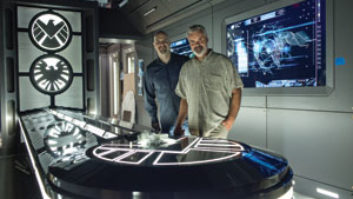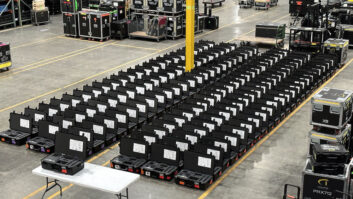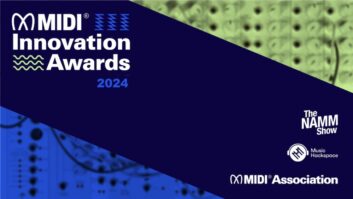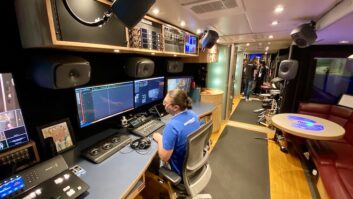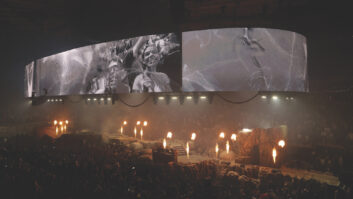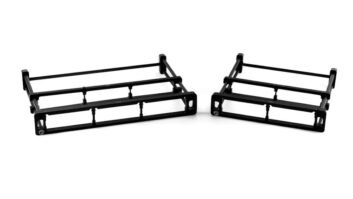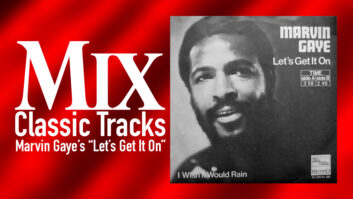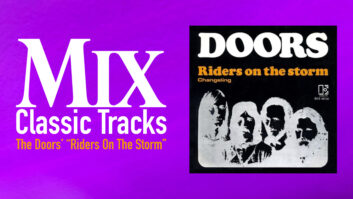New York, NY—The Avengers is now the third highest-grossing film of all-time; building on the 2012 movie’s tale of superheroes saving New York City, it’s only appropriate that Discovery Times Square, an exhibition hall only blocks from where the film’s fictional battle took place, would present Marvel’s Avengers S.T.A.T.I.O.N., an “immersive experience” that runs through January 4, 2015.
Produced by Victory Hill Exhibitions, the installation allows visitors to enter a high-tech training center— a maze of control rooms, laboratories and corridors—where they can become secret agents, ogle props from the film and learn all about the realworld science behind the comic book characters. Whether they’re using the interactive exhibits to map The Hulk’s brain, discover how Thor’s hammer conducts electricity, test their strength against Captain America or control Iron Man’s body armor using the pupils of their eyes, visitors leave both excited and enlightened.

But while the displays are impressive, little thought was initially given to the audio aspects. As audio post supervisor Mark Edward Lewis recalled, “I said, ‘Let me get this straight—you’re going to have Iron Man fly in silence?’ They figured they’d use some ambiances, but after about an hour, I had them realizing that there’s a lot of considerable things that we could do.”
As the project progressed, Lewis brought in Frank Serafine as his senior sound designer. “At the beginning, our issue was to get organized over what ended up being 224 speakers on 168 discreet channels and more than 300 sounds that we had to develop,” said Lewis.
Just as challenging, however, was ensuring that the sounds of the superheroes— for instance, the buzzes and whirrs of Iron Man’s armor—were the same as heard on the big screen. For those, Serafine had to track down pre-dub ProTools sessions of The Avengers and related superhero films. “We were able to pull a lot from them, but when you go through a pre-dub, some are 250 or more tracks deep with sound effects,” said Lewis.
That said, the audio team still created roughly two-thirds of the exhibit’s sounds. For instance, in The Avengers, the Tesseract (a fictional device that creates portals to other worlds) could be heard starting up and shutting down—an effect created by recording a giant turbine. There was no running time heard in the film, however, so Serafine had to create a 15-second startup, 30-second run and 15-second shutdown. When it came time to create a visual effect of what a NASA mapping of the Tesseract’s energy output would look like, Lewis suggested putting a frequency analyzer on the turbine sound. Before long, sound designer Francois Blaignan was running the sound through a ProTools rig with iZotope’s RX3 Complete Audio Repair plug-in—and the resulting visual, with a new skin draped over the RX3 controls, is now part of the Tesseract exhibit.
Eschewing major networking, all sound and video for each exhibit is localized to that room, served off Hewlett-Packard workstations and Apple Mac Minis. “I doubt there’s a Mac Mini available in any Apple store in NYC right now,” Serafine half-joked, though in fact, most of the pro audio gear used was supplied by Guitar Center Pro. While the entire 10,000-square-foot exhibition was pre-built in a Valencia, CA warehouse and then dismantled and shipped via nine semi-trailer trucks, each room’s audio tracks had to be mixed onsite in New York to be optimized to the exhibit space. With all the equipment hidden behind walls, each room’s audio tracks were mixed on iPads using PreSonus AB- 1818VSL Remote software connected via WiFi to AudioBox 1818VSL interfaces that were often being used for show control as well.
At eye-level, the exhibition is flawless, but above, the rooms have open ceilings, with the exhibition hall’s matte black ceiling only a few feet above the walls. “The rooms are so reflective; we’re constantly fighting for isolation in about 50 audio zones throughout the exhibit,” said Serafine. Numerous live sound loudspeakers were tested and didn’t work on multiple levels, he said: “We saw very clearly, very quickly, that not only was there a cost problem, but also a dispersion pattern problem— because they’re meant for dispersing sound, but we don’t want it banging around, room to room.”
Ultimately, they chose to use PreSonus Eris E5, E8 and Sceptre S6 studio monitors and Temblor T10 subwoofers inside the exhibition, while JBL LSR305s cover the gift shop and cueing area. Since the PreSonus monitors had to be placed just above the exhibition walls aimed into the rooms, their front-firing acoustic ports help keep the bass contained to specific spaces.
As a result, volume is kept to roughly 78 dB in each room, but the audio team wanted more impact in a few cases. That was solved by putting multiple 3-inch-high ButtKicker Mini LFEs—small transducers meant to sit under a drum throne—beneath the floor; audio team member Carl Yanchar mounted them in parallel within layers of 1-inch plywood and rubber boots, “otherwise they sound great until you hear them plunk as they unscrew themselves,” said Lewis. Extremely low frequencies are EQ’d away from the series wired transducers, as the ButtKickers can reproduce transients, but with sustained LF energy, “they overheat and then shut off for 10 minutes.” The payoff comes in an exhibit where visitors watch a life-sized Hulk (in reality, a visual effect on an 81-square-foot touchscreen) punch the wall. “When you put three of them under the floor and get a transient of about 115 dB at 35 Hz, it’s intense,” said Lewis. “We ran those punch noises and were laughing like little kids, going ‘We’re going to scare the crap out of people!’”
PreSonus
Presonus.com
Marvel’s Avengers S.T.A.T.I.O.N.
discoverytsx.com/exhibitions/avengers
